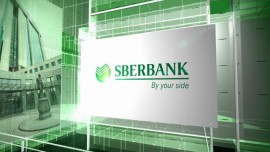Sberbank to overhaul core banking platform
Russia’s largest banking group, Sberbank, is undergoing a major technology overhaul. The bank’s senior MD of technology, Mikhail Khasin, did a presentation on the bank’s new business development platform at a recent conference, TAdviser SummIT.
The initiative is a “revolutionary transformation” of all systems that currently form Sberbank’s core banking platform. He said the new development incorporates the latest technologies in working with huge volumes of data in real-time, such as the in-memory data grid.
The reengineering is scheduled for completion in 2018. What will be achieved? Shorter time to market for new products, considerable reduction in the core banking platform costs and increased levels of automation, according to Khasin.
The platform will be rolled out across the entire bank.
The increased mobility of banking and the growth of mobile customers spurred Sberbank to modernise its underlying tech, Khasin explained. Smartphones and tablets are the customers’ “the windows to the world”, he said, and they want to get all kinds of services through them including the financial ones. Hence, the banks need to change – from the product oriented model to the customer oriented one.
Another challenge is the explosion of transaction volumes at peak times, he observed. In the last decade, the number of transactions at Sberbank increased by 100 times. Hence, Sberbank requires a platform that has practically unlimited scalability, that is flexible and user-friendly.
The current platform is supported by multiple packages from domestic vendors such as Diasoft, R-Style Softlab, CFT and Inversia, plus in-house developments.
The new platform will have a four-tier architecture. The first one is “the universal, multi-channel business logic layer”. This is the “window” that the client uses and that enables the bank to bring new functionality across all channels – branch, digital, call centre and partner channels.
The second layer is “the business hub” that contains the single profile of a client and the complete business logic of working with this client, his/her products and tariff packages.
The third tier is the product factory that consists of scalable engines processing the transactions. These include credit and deposit factories, money transfers etc.
The last tier is the data factory that include structured and unstructured customer data.
This architecture “creates incredible possibilities for brand new scenarios of customer service”, Khasin said. As an example, he suggested a customer who posted on Twitter his wish to travel to Mexico. This information is fed into Sberbank’s data factory, which then finds and compiles all the data that Sberbank has on this person. The results are then fed in-memory to the customer profile – as a result, this customer might get an email or text message that he can get a loan from the bank for his trip to Mexico and is offered a package from a tour operator that is Sberbank’s partner. The customer is also informed how this can be done and where the nearest bank branch and tour operator offices are located.
To enable such interoperability with third parties, it is vital for any new platform to have open APIs, Khasin stated. The bank is then capable of building a partner ecosystem that allows it to attract and retain customers by offering a broad product spectrum – not just the financial one – such as insurance or travelling, for instance.











































